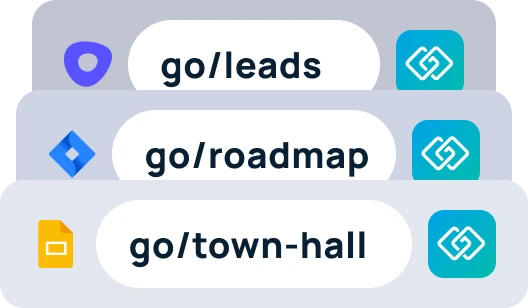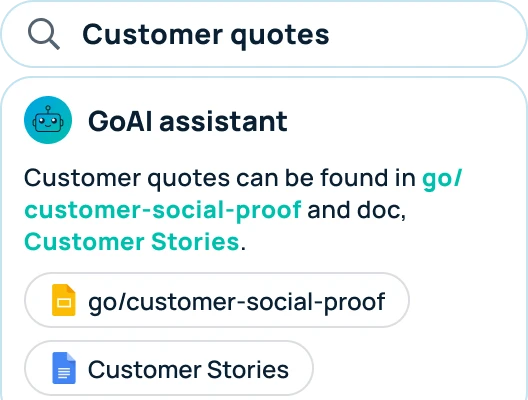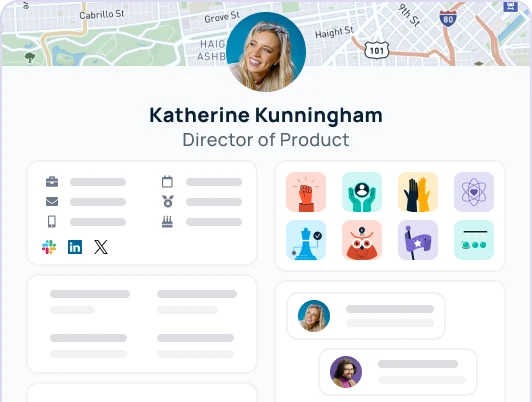All work and no play… or why not both? Gamification boosts employee engagement by making work more playful. But what exactly is this trend, and how can you make sure it helps more than it hurts?
Gamification is a way to increase employee engagement by introducing game-based elements to daily workflows – such as rewards systems, progress tracking, badges and achievements, and more. Picture what Duolingo does for language learning (minus the passive-aggressive owl).
Workplace gamification programs have grown in popularity over the past few years. Globally, 70% of the world’s largest 2,000 companies use gamification. But these solutions don’t need video game-like complexity; they can be as simple as an interactive to-do list.
Below, we’ll tackle the pros and cons of using gamification for employee engagement. We’ll also recommend a gamified people platform that prioritizes motivation, employee relationships, and a positive company culture.
Pros of using gamification for employee engagement
1. Increased motivation and engagement
Gamified systems can spark motivation. This workplace study found that 72% of people say gamification motivates them to work harder on the job and increases their engagement by 48%. And by increasing engagement, you’re also increasing employee productivity.

Think about Apple Watches – how many people get their steps in just to close those colorful rings? Or beat their friends to the next milestone?
These gamification elements make exercise more fun, and you can apply the same principles to the workplace. Use goal-tracking apps to view progress bars, earn green checkmarks for goals met, or even level up virtual avatars through task completion.
2. Skill development and learning
Employee training and development is important – but can also be a chore. Improve employee engagement with game-based learning, which enlivens routine trainings and incentivizes skill development.
For instance, you could test compliance training knowledge with a round of Jeopardy or trivia, instead of a boring quiz. Use an online Jeopardy template to make an easy, customized game for your company. See the next section for another learning-incentive idea.
3. Data-driven insights
Gamification platforms can provide short- and long-term data. Track team success rates by viewing their weekly goal completion, or assess company performance with a five-year-plan progress bar.
Or, you could create a leaderboard showing who’s watched the most learning videos or completed the most professional development courses. This challenges employees to learn more and compete for the top spot. It also shows who’s hungry to improve, and who isn’t motivated.
These insights can inform decision-making for supervisors and company leaders. Want more insights into what’s getting accomplished at work? Learn the secret to measuring remote employee productivity.
4. Team building and collaboration
When people play games together, they can appreciate each other’s creativity, drive, and team spirit. The same is true for gamified work activities.
Try a virtual scavenger hunt to promote learning and team building during the onboarding process. Divide new employees into teams and give them 30 minutes to earn points by finding information – the company mission statement, the digital assets folder, the HR manager’s favorite movie, or the IT team’s top online safety tip.
The winners could earn lunch with the CEO, or everyone could get a company sticker for their laptop. The biggest reward? By working together toward a common goal, new employees feel part of the team from day one.
5. Recognition and rewards
Here’s a central principle of gamification for employee engagement: recognition and rewards reinforce good work. When employees complete projects, they could earn badges for timeliness and excellence or unlock achievements by task – whether that’s squashing bugs, resolving support tickets, or closing deals.
This sort of recognition accumulates over time. With a reward system built on praise for everyday work, you increase job satisfaction and reduce employee turnover.
Cons of using gamification for employee engagement
1. Superficial engagement
Sometimes, gamification motivates superficial engagement for physical rewards rather than genuine interest. Each new prize competition might spike productivity at first, but there would be no long-term satisfaction.
Combat this issue with a mix of incentives. Company-wide recognition boosts employee morale more than an Amazon gift card, but an occasional monetary prize could drive short-term, high-priority outcomes.

2. Potential for burnout
Don’t overburden employees with too many gamified tasks. If everything feels like a competition, or if every goal requires tracking, employees will feel overburdened and micromanaged. This leads to burnout.
Instead, be selective about what elements of work benefit from gamification. Target a few sectors, like onboarding and training, instead of everything at once. Set appropriate challenges and strive for a healthy workload.
If you’re worried about burnout, make sure you’re also considering these employee engagement factors.
3. One-size-fits-all approach
Not everyone will love all types of gamification for employee engagement. Some people might feel discouraged if they lose points for missing goals or can’t keep up with coworkers. Embrace customization and flexibility so everyone can engage at their chosen level.
For instance, you could let employees hide leaderboard rankings, especially if they’re new and haven’t had time to build up accomplishments.
4. Unintended negative competition
Try to avoid unhealthy competition. Here’s an example: travel rewards are a popular way to ignite friendly competition for sales teams. This same approach could be disastrous for an engineering team that thrives on teamwork. Instead of working together to troubleshoot issues and meet sprint deadlines, the engineers would be incentivized to work in isolation to win the grand prize.
A team like that would benefit from collaborative competitions. Instead of an individual prize, offer a collective reward that motivates the team toward a common goal.
5. Short-term focus
With too many daily checkmarks, badges, and work rankings, employees get lost in short-term goals. This might not be a problem now, but it could be in a few months. Knocking out blog copy isn’t enough on its own – you need an overarching content plan to provide direction.
Try to align gamification strategies with broader company objectives, so all those small goals clearly add up to something bigger and more impactful. Employees will engage more when they feel like a meaningful part of the company’s success.
GoProfiles – A robust tool for employee engagement
For the right dose of gamified elements, try GoProfiles. This people platform combines fun and practicality. The org chart, customizable profiles, and company map all have interactive features and an appealing UI.
The best gamification features on GoProfiles are the peer recognition badges, or Bravos. These badges promote gratitude, highlight team players, and provide data on what people are doing well. Plus, employees earn achievements and climb leaderboards for Bravos given and received – which boosts motivation and engagement for meaningful work.
For example, Kevin, a designer, could give his manager Krista a “Rockstar Manager” Bravo to show his appreciation for all her help and mentorship. This helps Krista see that her hard work is paying off.

Ready to gamify the employee experience? Schedule a GoProfiles demo today.









